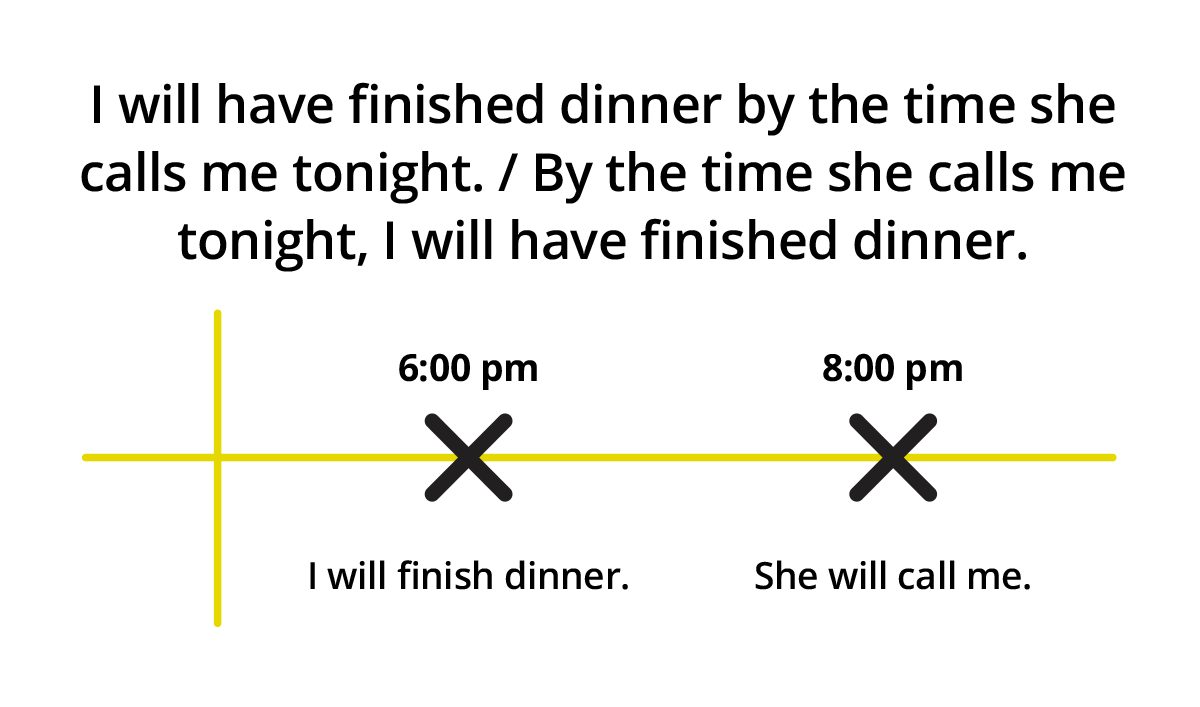How long can one verb be?
When a verb is comprised of four parts, it starts to get complicated—and that’s exactly what happens with the future perfect progressive (will + have + been + -ing verb). The future perfect and the future perfect progressive are rarely used in English, so should we bother teaching these tenses to our students?
My opinion is that if students will come across it, we need to teach it to them at some point (but you can definitely wait until they’re at an advanced level). Just be sure to mention that since it’s unusual to know for sure what will happen at two points in the future, these tenses are rarely used. Also, they are quite formal, and we usually substitute the simple future and the future progressive for a more informal style.
For advanced students and those taking a test like the TOEIC, TOEFL, IELTS, etc., here’s a tried-and-true method for making the future perfect and future perfect progressive as clear as possible.
Future Perfect: WILL + HAVE + P.P.
The future perfect is formed with the future modal will, the base verb have, and the past participle of the main verb. It is used when you think the first future action will finish before the second future action. The following diagram will help illustrate this to your students:

Make sure you point out that a simple present verb is used in the dependent clause, so students need to be careful of the subject (the verb will end in -s for the following subjects: she, he, it, a singular count/countable noun, and a non-count/uncountable noun).
Future Perfect Progressive: WILL + HAVE + BEEN + ING VERB
The future perfect progressive is formed with the future modal will, the base verb have, the past participle been, and the -ing form of the main verb. It is used when you think the first future action will continue until the second future action. The following diagram will help illustrate this to your students:

Again, a simple present verb is used in the dependent clause, so students need to determine if the subject requires an -s ending.
Note: If you want to elaborate for more advanced students, you can explain that the future perfect progressive is formed by combining the future perfect (will + have + p.p.) plus the basic progressive pattern (be + -ing verb). Since the past participle of the Be verb is been, you get will + have + been + -ing verb. Also note that have will never be has (no matter what the subject is) because it is always modal + base verb.
Comparison Chart
To compare the two verb tenses and show your students examples, use the following verb chart.
Grammar & Usage – Future Perfect Vs. Future Progressive
Important Note
When giving your students examples, it is very important to mix up the order of the independent and dependent clauses. Make sure that you give some examples where the independent clause comes first (with the future perfect or future perfect progressive tense), and others where the dependent clause comes first (with the simple present tense).
Point out that when the dependent clause comes first, students must use a comma between the clauses. Showing both types of examples also means that students won’t incorrectly memorize “will + have + been + p.p. first, present verb second,” which can cause errors.
Practice with Ellii Lessons
Try our Grammar Practice Worksheet lesson on the Future Perfect. This lesson has over 16 pages of practice—try using some in class on different days, assign some for homework, and use one or two as a quiz.
We also have a lesson on the Future Perfect Progressive, which includes exercises that combine both tenses.
Verb Tense Review 2 – The Perfect Tenses contains even more practice exercises that compare these two tenses.


